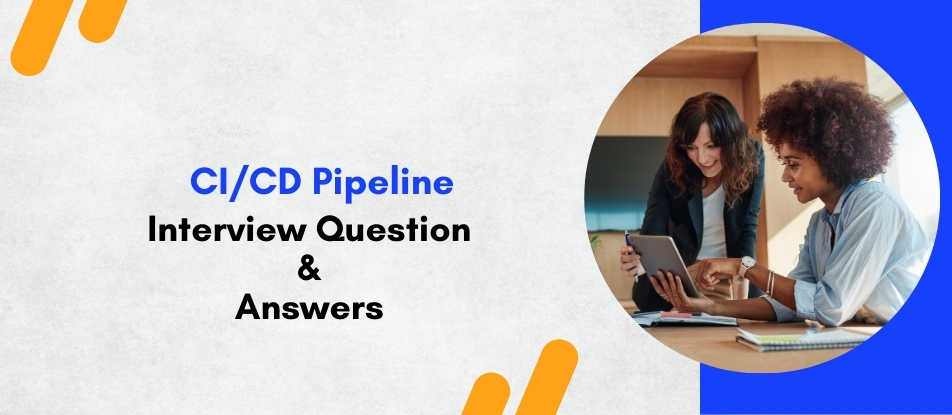
This CI/CD Pipeline training course equips learners with practical expertise in designing, building, and managing automated software delivery pipelines. Covering tools like Jenkins, GitLab CI/CD, Docker, and Kubernetes, the course explores integration, testing, deployment strategies, and monitoring. Designed for DevOps professionals and developers, it emphasizes real-world implementation of CI/CD to enhance agility, reduce errors, and ensure consistent, high-quality software releases in fast-paced development environments.
CI/CD Pipeline Training Interview Questions Answers - For Intermediate
1. What is the difference between manual and automated triggers in a CI/CD pipeline?
Manual triggers require human intervention to start a pipeline process, often used for production deployments or critical environments where approvals are needed. Automated triggers are initiated automatically upon events like code commits, merges, or tag creations. Most modern CI/CD pipelines use automated triggers to streamline continuous integration while preserving manual triggers for controlled releases.
2. How do branching strategies affect CI/CD pipelines?
Branching strategies like GitFlow, trunk-based development, or feature branching impact how code is integrated and deployed. For example, in GitFlow, CI is run on feature branches, while CD may be applied on develop or main. Proper branching helps control the pipeline's flow, isolate features, and reduce merge conflicts in large teams.
3. What is canary deployment, and how is it implemented in a CI/CD pipeline?
Canary deployment is a release strategy where new code is deployed to a small subset of users or systems first. If no issues are reported, the deployment gradually rolls out to the rest. In CI/CD, it can be implemented with orchestration tools like Kubernetes or service meshes like Istio, allowing controlled, low-risk production releases.
4. How do you manage secrets in a CI/CD pipeline?
Secrets such as passwords, tokens, and keys should never be hardcoded. Instead, use secret management tools like HashiCorp Vault, AWS Secrets Manager, or CI/CD tool integrations (e.g., GitHub Actions Secrets or GitLab CI variables). These allow secure, encrypted handling of sensitive data during pipeline execution.
5. What is a self-hosted runner/agent in CI/CD, and when should it be used?
A self-hosted runner is an agent you deploy on your own infrastructure to run CI/CD jobs instead of using cloud-hosted ones. It’s useful when jobs require specific OS, software, security, or network configurations. Self-hosted runners also allow better control over resource usage, though they require maintenance and security hardening.
6. How does caching improve performance in CI/CD pipelines?
Caching reduces build and test time by storing intermediate results such as dependencies, build artifacts, or Docker layers. When enabled, subsequent pipeline runs can reuse these cached items, avoiding the need to re-download or recompile them. Proper cache management improves efficiency, especially for large projects with many dependencies.
7. What is the difference between continuous delivery and release automation?
Continuous delivery ensures that code is always ready to be deployed, but the deployment itself might be triggered manually. Release automation, on the other hand, automates the final delivery process, often including approvals, packaging, and environment-specific configurations. Together, they minimize human error and accelerate time-to-market.
8. How do CI/CD pipelines support infrastructure as code (IaC)?
CI/CD pipelines can automate the provisioning and management of infrastructure using tools like Terraform, Ansible, or CloudFormation. IaC files are stored in version control and applied through pipeline stages, ensuring consistency, repeatability, and traceability of infrastructure changes alongside application deployments.
9. What are some common KPIs used to measure CI/CD pipeline success?
Key Performance Indicators (KPIs) include build success rate, mean time to recover (MTTR), deployment frequency, lead time for changes, and change failure rate. These metrics help assess pipeline health, team productivity, and overall software delivery performance, providing insights for continuous improvement.
10. How do container registries work in CI/CD workflows?
Container registries like Docker Hub, Amazon ECR, or GitHub Container Registry store and distribute Docker images built during the CI pipeline. Once a container is built, it’s pushed to the registry as a versioned artifact. The CD pipeline then pulls the image from the registry and deploys it to the desired environment.
11. What is the role of feature flags in CI/CD pipelines?
Feature flags allow code to be deployed without immediately enabling new functionality. They provide the ability to toggle features on or off at runtime, enabling safer deployments, A/B testing, and quick rollback without redeploying. Feature flags decouple deployment from release, offering greater control over production behavior.
12. How can you ensure test reliability in a CI/CD pipeline?
Reliable tests are key to preventing false positives or negatives in CI/CD. This includes writing deterministic, isolated tests, using proper mocking/stubbing, managing test data, and maintaining fast execution. Regularly reviewing flaky tests and categorizing test types (unit, integration, UI) also helps ensure consistent results across pipeline runs.
13. What is a deployment pipeline vs a delivery pipeline?
A delivery pipeline focuses on the process of getting code from commit to a deployable state, including build, test, and packaging. A deployment pipeline takes that deployable artifact and handles the actual release into production or other environments. Some pipelines combine both processes, but they can also be segmented for clarity and control.
14. How does monitoring tie into the CI/CD lifecycle?
Post-deployment monitoring ensures that changes deployed via CI/CD do not negatively impact system performance or availability. Tools like Prometheus, Grafana, Datadog, or New Relic can be integrated to observe metrics, logs, and alerts. Feedback from monitoring systems can even trigger rollbacks or updates, creating a feedback loop.
15. What’s the role of code quality tools in CI/CD pipelines?
Code quality tools like SonarQube, ESLint, or PMD analyze code for potential bugs, code smells, and style violations during the CI phase. They enforce coding standards and can fail a build if thresholds are not met. Integrating these tools into pipelines improves maintainability, readability, and long-term stability of software projects.
CI/CD Pipeline Training Interview Questions Answers- For Advanced
1. How do you implement dependency management in CI/CD pipelines to avoid version conflicts and ensure reproducibility?
Dependency management in CI/CD pipelines involves locking versions and isolating environments. Use tools like pipenv, npm’s package-lock.json, Maven POM, or Docker images to pin specific versions. For reproducibility, build artifacts and dependency files should be stored in artifact repositories like JFrog Artifactory or Nexus. CI pipelines should validate dependency integrity using checksum verification and run security scans on libraries to prevent vulnerabilities. Containerizing builds further ensures consistent environments. Integrating dependency caching and versioning strategies (semantic versioning or Git tagging) helps maintain build stability across different stages and environments.
2. How can pipelines be optimized for monorepo structures with multiple applications or services?
In a monorepo, where many services share a single repository, pipelines can become inefficient if every commit triggers full builds. To optimize, implement path-based triggers to identify which sub-projects were changed and trigger only relevant jobs. Tools like Bazel, Nx, or custom scripts can analyze diffs and scope builds accordingly. Use parallel execution to build/test services concurrently and cache shared dependencies. Shared CI/CD templates and reusable jobs reduce duplication. Maintain strict module boundaries and logical folder structures to support scaling and reduce coupling between services in the monorepo.
3. How do feature environments (a.k.a. preview environments) enhance the CI/CD process?
Feature environments are temporary, automatically provisioned environments for each feature branch or pull request. They allow developers, testers, and stakeholders to validate changes in isolation before merging. CI/CD pipelines can create these environments using infrastructure as code, deploy the new feature, and destroy them after use, typically using tools like Terraform, Kubernetes namespaces, or Vercel/Netlify for frontend. These environments support better QA, faster feedback, and reduce integration risks by exposing code to real-world conditions early. They are particularly useful for microservices and frontend-heavy development.
4. How do you implement zero-downtime deployments using CI/CD pipelines?
Zero-downtime deployments ensure users aren’t impacted during updates. Techniques include blue-green deployments, canary releases, and rolling updates. Pipelines should gradually replace old instances with new ones, validating health checks before progressing. In Kubernetes, this is handled via rolling updates with readiness probes and minimum availability configurations. Load balancers and traffic routers (like NGINX, Istio, or Envoy) help shift traffic without breaking sessions. Automation must include pre-deploy checks and post-deploy monitoring to confirm successful deployment before terminating the old version.
5. How can pipeline observability and feedback loops improve developer productivity?
Pipeline observability provides transparency into build times, failure rates, test flakiness, and deployment frequency. Integrating telemetry and dashboards using tools like Grafana, Datadog, or New Relic helps teams identify bottlenecks and optimize CI/CD steps. Real-time notifications (via Slack, Teams) and failure insights help developers respond faster. Feedback loops improve MTTR (mean time to recovery), reduce merge conflicts, and ensure the pipeline evolves with the development process. Observability supports continuous improvement, making pipelines not just automation tools, but active participants in DevOps workflows.
6. What is a multi-branch pipeline, and how does it benefit CI/CD operations?
A multi-branch pipeline dynamically creates and manages pipelines for each branch in a repository, typically in tools like Jenkins, GitLab, or GitHub Actions. This enables teams to test and validate changes in isolation per branch, encouraging cleaner merges and safer releases. It automates build and test execution across all feature, bugfix, or release branches. Developers receive quicker feedback, and it allows integration checks to occur early. Managing branch-specific configurations or triggers can further refine workflows based on project requirements.
7. How can secrets be rotated without disrupting CI/CD processes?
Secrets should be stored in external secret managers like Vault, AWS Secrets Manager, or Azure Key Vault and accessed dynamically at runtime. Rotation policies can automatically update secrets, and CI/CD pipelines should be configured to fetch the latest version on each run. Pipelines must never store secrets in logs or code. Implement rolling deployments with short-lived credentials or token-based access. Use secret references in environment variables and maintain compatibility between rotated and old versions during the transition to avoid disruptions.
8. What are the risks of long-running CI/CD pipelines and how do you address them?
Long-running pipelines slow feedback, reduce deployment frequency, and frustrate developers. They can lead to timeouts, resource contention, and lower team efficiency. To address this, break pipelines into smaller stages, run tasks in parallel, and isolate flaky tests. Use caching and incremental builds to avoid unnecessary work. Nightly or asynchronous tasks can be separated from critical build paths. Regularly reviewing build performance metrics helps identify bottlenecks. Keeping pipelines fast and reliable encourages adoption and trust in the automation process.
9. How do you integrate performance testing into CI/CD pipelines?
Performance tests can be integrated post-deployment to staging using tools like JMeter, Gatling, or k6. Tests simulate user load and report metrics like response time, error rates, and throughput. Results are compared against performance baselines, and the pipeline can pass/fail builds based on thresholds. For microservices, tests should target APIs and critical transaction paths. Pipelines should also capture system-level metrics (CPU, memory, network) during performance tests. These tests should run after functional tests, either nightly or on-demand, to prevent bottlenecks in faster release cycles.
10. How do you implement rollback strategies in CI/CD for different environments?
Rollback strategies depend on deployment architecture. For containerized environments, Kubernetes offers native rollback to previous deployments. For virtual machines, immutable infrastructure (e.g., AMI rollbacks) is preferred. Feature flags allow rollback of features without redeployment. Pipelines should store previous artifacts and deployment metadata to support version reversion. Rollbacks should be automatic on failure detection, using health checks and canary monitoring. In more complex setups, traffic routing tools (e.g., Istio, NGINX) can divert users to a known stable version, minimizing service disruption.
11. How can AI/ML models be integrated into CI/CD pipelines (MLOps)?
For ML projects, CI/CD pipelines validate data, train models, run evaluation metrics, and deploy to production. CI handles code linting, unit tests, and model validation (accuracy, drift, etc.). CD includes containerizing the model with inference code and deploying to serving platforms (like Seldon, TensorFlow Serving, or SageMaker). Model versioning and reproducibility (via MLflow, DVC) are key. Pipelines may also trigger retraining when new data arrives. Model monitoring post-deployment ensures performance and data drift are within acceptable limits, making CI/CD essential for reliable AI in production.
12. How do you scale a CI/CD infrastructure to support large enterprise teams?
Scalability requires horizontal scaling of build runners/executors, using containerized agents or autoscaling VM pools. Queue management, concurrency controls, and resource quotas ensure fairness. CI/CD tools should support distributed caching and artifact storage. Modularizing pipelines by team or service reduces contention. Monitoring pipeline load, job durations, and failure rates helps plan capacity. Infrastructure automation (Terraform, Ansible) simplifies managing multiple agents across data centers or clouds. Using self-service portals or templates also enables teams to onboard quickly without manual intervention.
13. What are dynamic pipelines, and how do they improve pipeline flexibility?
Dynamic pipelines generate workflows at runtime based on context like branch, file changes, or environment variables. Tools like GitLab, Jenkins, and CircleCI allow conditional steps, YAML anchors, or templating. This flexibility enables one pipeline to handle multiple workflows—e.g., skipping deploy steps for docs changes or triggering only security scans on dependency updates. Dynamic behavior reduces duplication, accelerates builds, and ensures that only relevant steps execute, improving overall CI/CD efficiency and maintainability.
14. How do you approach compliance and audit requirements in CI/CD workflows?
CI/CD pipelines must log all activities—who triggered what, when, and with which parameters. Logs, artifacts, and deployment metadata should be stored securely and retained per compliance policies (e.g., SOC2, HIPAA). Pipelines should enforce code reviews, scan for secrets, and require approvals for production deploys. Compliance-as-Code tools can validate infrastructure and app configs. Role-based access, change control via Git, and immutable artifact promotion between environments ensure traceability and control. Automating these practices helps satisfy audit trails and security assessments without slowing down delivery.
15. How can chaos engineering be integrated into a CI/CD pipeline?
Chaos engineering introduces controlled faults into systems to test resilience. In CI/CD, chaos experiments can be triggered post-deployment in staging or test environments using tools like Gremlin, Chaos Mesh, or Litmus. These tests validate how systems handle failure—like network latency, pod crashes, or resource exhaustion. Integrating chaos steps in pipelines uncovers weak points before reaching production. Experiments should be limited, observable, and reversible. Including them as a conditional stage in your pipeline reinforces a proactive approach to high availability and system reliability.
Course Schedule
| Dec, 2025 | Weekdays | Mon-Fri | Enquire Now |
| Weekend | Sat-Sun | Enquire Now | |
| Jan, 2026 | Weekdays | Mon-Fri | Enquire Now |
| Weekend | Sat-Sun | Enquire Now |
Related Courses
Related Articles
- Enhance Skills with Primavera P6 Fundamentals Rel 19 Course
- 5 In-demand DevOps Skills to Nurture an IT Career
- Certify Your Expertise: PingDirectory Certification and Training Course for Proficient Identity Management
- A Comprehensive Insight to operational excellence with Emerson DeltaV DCS
- How SP3D Enables Clash Detection & Reduces Rework in Complex Industrial Projects
Related Interview
- Distributed Cloud Networks Training Interview Questions Answers
- WorkSoft Certify Automation Training Interview Questions Answers
- Certified Threat Intelligence Analyst (CTIA) Training Interview Questions Answers
- Generative AI for Business Training Interview Questions Answers
- SP3D Admin Interview Questions Answers
Related FAQ's
- Instructor-led Live Online Interactive Training
- Project Based Customized Learning
- Fast Track Training Program
- Self-paced learning
- In one-on-one training, you have the flexibility to choose the days, timings, and duration according to your preferences.
- We create a personalized training calendar based on your chosen schedule.
- Complete Live Online Interactive Training of the Course
- After Training Recorded Videos
- Session-wise Learning Material and notes for lifetime
- Practical & Assignments exercises
- Global Course Completion Certificate
- 24x7 after Training Support

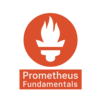



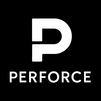


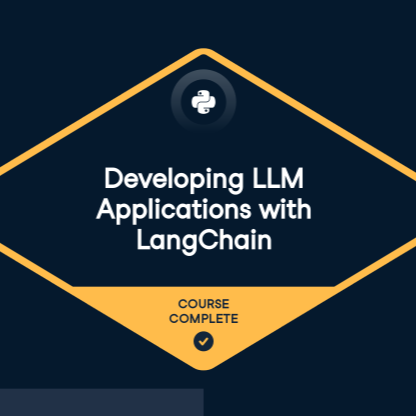

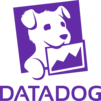



 Join our Live Instructor-Led online classes delivered by industry experts
Join our Live Instructor-Led online classes delivered by industry experts